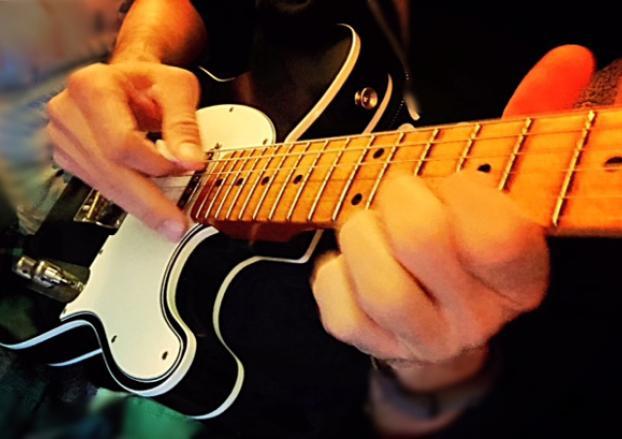Add New Dynamics to Your Solos with Triplets

A triplet, in its most basic sense, is simply a group of three notes. If you want to be more complex when defining it, it is a portion of musical time that has been rhythmically split into three equal parts. Which means even if you are playing a song in a 4/4-time signature—which there's a decent chance you are—you're now playing those 3 notes to fit the 4/4 rhythm.
In other words, you are now dividing the beat into a different number of subdivisions from what would ordinarily be permitted by the time signature. Music (and math) geeks refer to these as “irrational rhythm groupings” or “tuplets.” But in reality, there is nothing irrational about them, because the note values are in fact rational fractions.
Without turning this into a math lesson let’s look at some basic concepts.
Notes come as whole, half, quarter, eighth, and sixteenth (for the extreme shredders). If you are playing in a 4/4-time signature which, again, if you’re playing most rock and roll other than Frank Zappa or Dream Theater you probably are, a whole note will be counted for 4 beats. A half note 2 beats, a quarter note 1 beat, etc.
Enter the triplet, where you will now play 3 notes in succession, but still match the time signature. In this scenario, where two quarter notes would equal the same duration as a half note, three triplet quarter notes will total that same duration. Which means the duration of a triplet quarter note will actually be played at 2/3 the duration of a standard quarter note.
How do we achieve this time signature anomaly and seemingly violate the fundamentals of math? Speed. By playing the notes faster—in this case playing your quarter note 1/3 faster than you ordinarily would—you can still make three notes in a row fit the time signature.
Enough math, let’s get to shredding. Triplets will add a new dynamic to your solos. And they may engage your audience in a way other note progression cannot. Why? The rule of three.
All the latest guitar news, interviews, lessons, reviews, deals and more, direct to your inbox!
The rule of three is actually a writing principle that states events and characters introduced in groups of three tend to be more interesting, satisfying, and easier to remember for the reader. Scientists theorize subjects presented as threes gives the audience brevity with rhythm, and the smallest amount of information necessary to create a pattern.
There’s a reason there weren’t four Billy Goats Gruff or two Little Pigs. There’s a reason Scrooge was visited by three Christmas ghosts. And think about your most memorable slogans and quotes. “Life, liberty and the pursuit of happiness,” “Stop, drop and roll,” and my personal favorite “ Veni, vidi, vici.”
You want to get your Caesar on and conquer triplets? Watch the video for Stone Mob’s “Guaranteed (Betty).” I play a sequence of triplets starting at 2:50 (right before some underwater shredding). Then watch the instructional video and I’ll show you how I did it. Two is company but when it comes to shredding three is allowed. Cheers, cheers and cheers!
